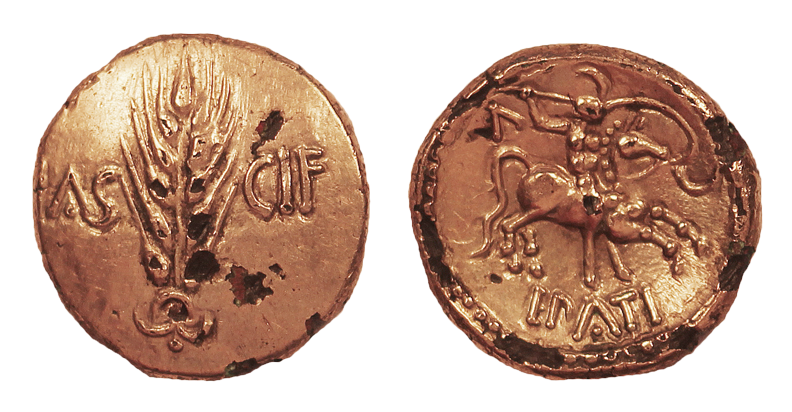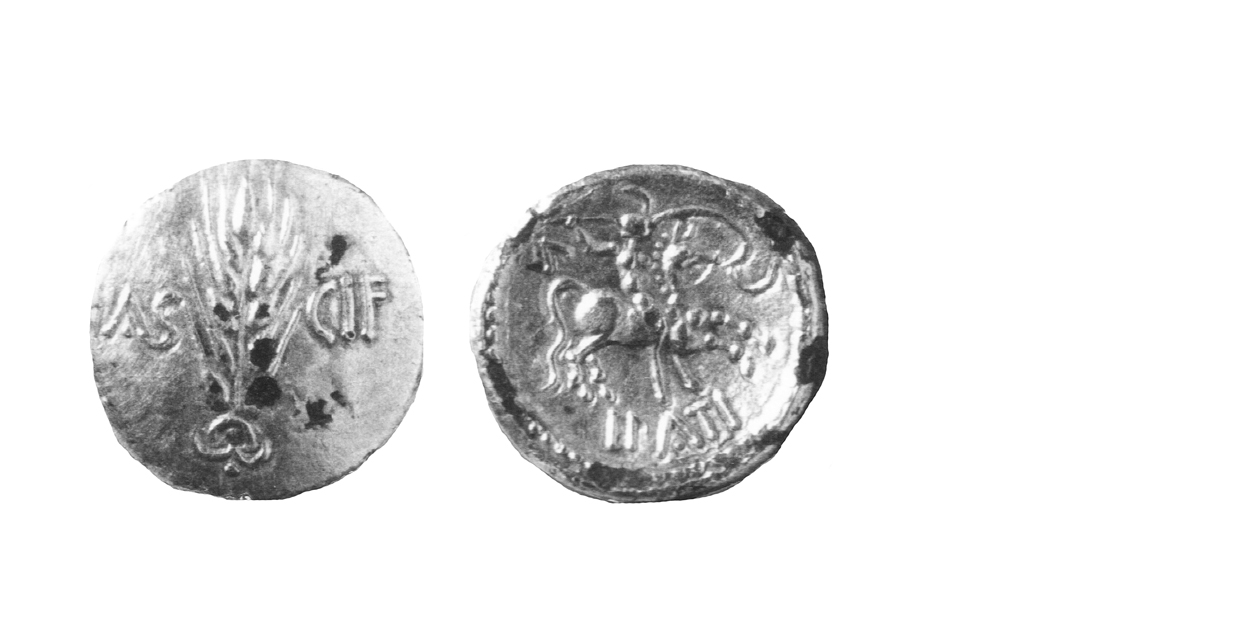
About the Coins
Function of the Coins (Info)
Introduction – From Prestige Gifts to Everyday Money
The gold staters imported to Britain before 100 B.C. were far too valuable to be used as an everyday medium of exchange. No ancient writer recorded the way the Britons reacted to these first imports, so we have nothing concrete to guide us. Most workers today agree that they likely served as prestige gifts, passing amongst members of the elite. It is possible they also served as a storehouse of wealth (one of the traditional uses of money).
Yet within 100 years, enormous numbers of low-value bronze and silver coins were in use throughout southern Britain. By the Claudian invasion of 43 A.D., a true money economy must have been developing.
Mechanisms of Monetization
How the coins came to be used as everyday money is practically impossible to determine. The path was undoubtedly complex and we will likely never know the details. However, two areas of study outside Celtic numismatics can supply useful suggestions.
The first is the lively debate surrounding the use of coins in Ancient Greece, the Roman Republic and the early Roman Empire. Since 1960, numerous workers have tried to measure the amount of money in circulation in the Roman world (145). Others have argued the accuracy of these calculations is too imprecise to be useful, and that the use of coins as money is better demonstrated by the writings of the ancient authors (146). Papyrus records from Roman Egypt helpfully give a vivid picture of the complex money economy that existed in the East (147). Although we only have these extensive accounts for Egypt, a similar picture for the entire Roman Empire is suspected. From all this, we can surmise that British contacts with the Roman world after the Gallic War could have supplied a good knowledge of the way a money economy functioned.
The second area is the ethnographic studies conducted by visitors to India, Africa and Polynesia over the last two hundred years (148). These suggest that societies lacking a money economy tend to see money as something unnecessary, complicated and perhaps, threatening. For quick adoption of a money economy, imposition by a conqueror is needed. No such imposition can be demonstrated in the case of pre-Roman Britain.
In the absence of a conqueror, money is usually first adopted for some special purpose. Gradually, over time, other uses are found, until a true money economy evolves.
Societies often have some problem with social relations that is best solved by using money. Exchange with external trading partners is one example. Another is controlling relations with groups in society that don't fit in very well with the existing non-monetary economy. For example, traveling priests may need compensation for their services, but there is no simple way to arrange this. Yet another theme is the control of women. Weddings are often arranged with either a bride being bought, or a dowry being provided. Negotiations can be complicated when the payments are in cattle, land or other physical goods. Gifts or payments in money can simplify things during these negotiations. From all this, we can speculate that coins were first used as money in specific situations (special purpose money) and eventually other uses were found. The transition could have taken many decades.
Next Section – First money transactions

